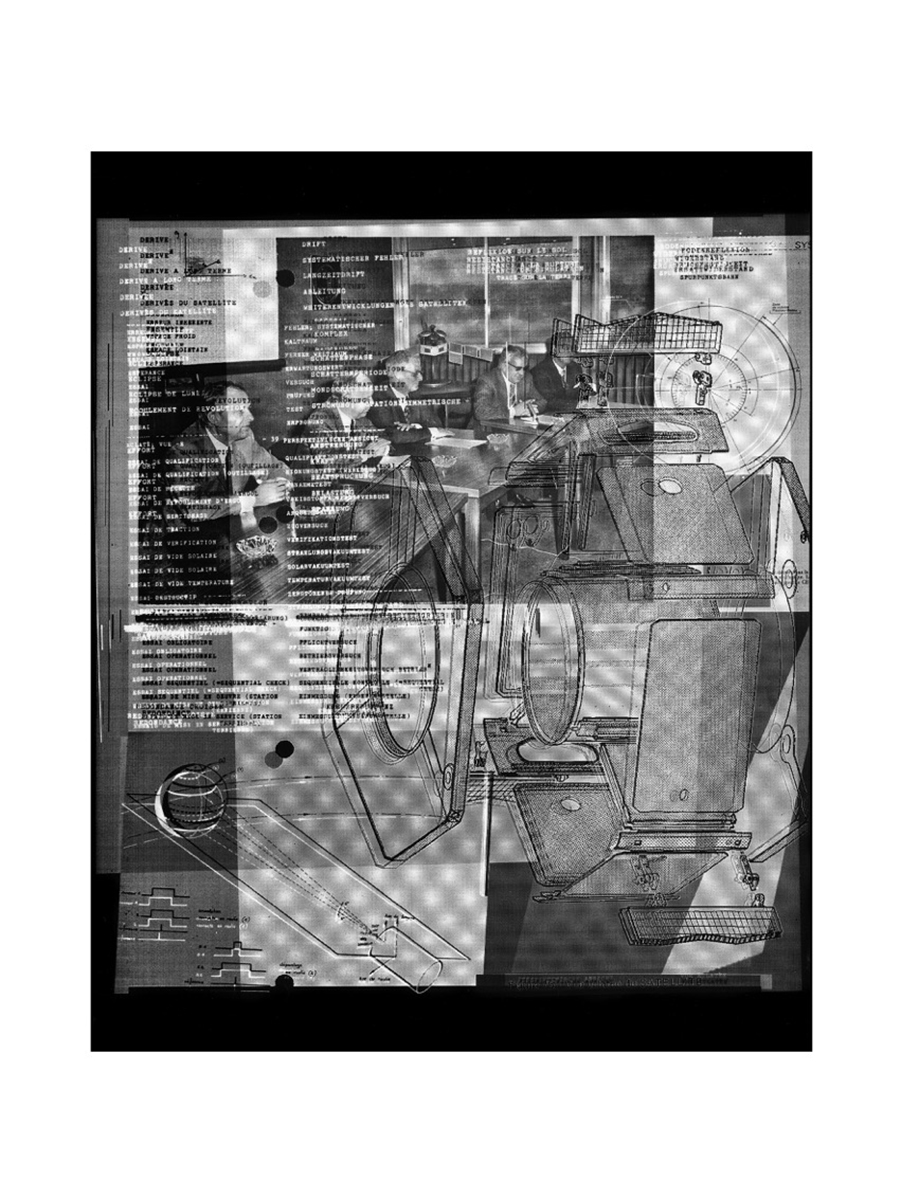Raphaël Dallaporta: Relique Avant-Garde
Text by Shoair Mavlian
The relics of the early post war collaborative space project Symphonies and its impact on civilian communication and entertainment is explored in Raphaël Dallaporta’s project Relique Avant-Garde.
Much of Raphaël Dallaporta’s work is made in conjunction with specialists outside the art world: Covariance (2015), for example, was a collaboration with mathematician Alexandre Brouste, whereas for Fragile (2011) he worked with medical practitioners. Dallaporta has no formal background in science, but several of his projects show a strong interest in the influence of science, astronomy, and technology on the everyday.
One such project is Relique Avant-Garde (2014) – his first collaboration with Centre National d’Études Spatiales (CNES the French National Centre for Space Studies) and an ode to the pioneering Symphonie project a joint Franco-German initiative in satellite communications. Originating in the 1960s as a post-war collaboration in the spirit of the Treaty of Rome, which laid out the founding tenets of the EU, The Symphonie Project produced the first Western European communications satellite system. Launched in 1974 and 1975, respectively, the satellites Symphonie A and Symphonie B operated in orbit for nearly ten years, far beyond their anticipated lifespan, but have been deactivated for nearly four decades.

Raphaël Dallaporta
/ Observatoire de l’espace – Cnes (the French National Centre for Space Studies)
Installation 19 baryt prints
format 350 x 135 cm.
Dallaporta’s work questions what happens to such technology – both in orbit and on the ground – when it fades into obsolescence. The once-pioneering infrastructure remains, as the title of the work suggests, as a relic of the avant-garde. The two large satellite antennae reflectors, based in France and Germany were photographed by Dallaporta as monuments of past glory. Shot using the rather traditional technology of an 8×10 view this choice of equipment, no longer cutting edge, was a reference to the obsolete technology which he was documenting. However, rather than capturing the reflectors as large-scale monoliths, he fractured each one into nine separate parts, perhaps in reference to their absence of functional relevance in the contemporary age. The two scenes are installed side by side and pointing towards each other, as if the antennae are in conversation, taking their rightful place as monuments of the past.
Between the two antenne sits one small image made up of archival information gathered by Dallaporta from the CNES archive, where he was the first artist to undertake research. A group of men sitting in a nondescript meeting room going about daily tasks, on the phone, taking notes, smoking, and although it seems uneventful, all major decisions were made from this meeting rooms. For Dallaporta this image summed up the realities of such projects, the exotic idea of space exploration actually takes place in a very formal office, with little creativity. Layered over the image is repetitive lexic language and technical drawings of the satellite.
Beyond its scientific impact, the project also symbolises the union and cooperation between the former rivals France and Germany less than 15 years after the end of World War 2. For Dallaporta, this cooperation had metaphorical resonance: if the two countries could work together to develop an effective communications system, then surely they were also communicating effectively with each other. Indeed, The Symphonie Project was a forerunner for future cross-border collaboration, and eventually developed into what is now known as the European Space Agency. Although its satellites are now physical relics, the programme’s legacy lives on in the mobile telecommunication technology that powers smartphones – a technology that, perhaps ironically, Dallaporta does not use.
For more from #3 Space click here.
For more of Raphaël’s work, visit his website here.

